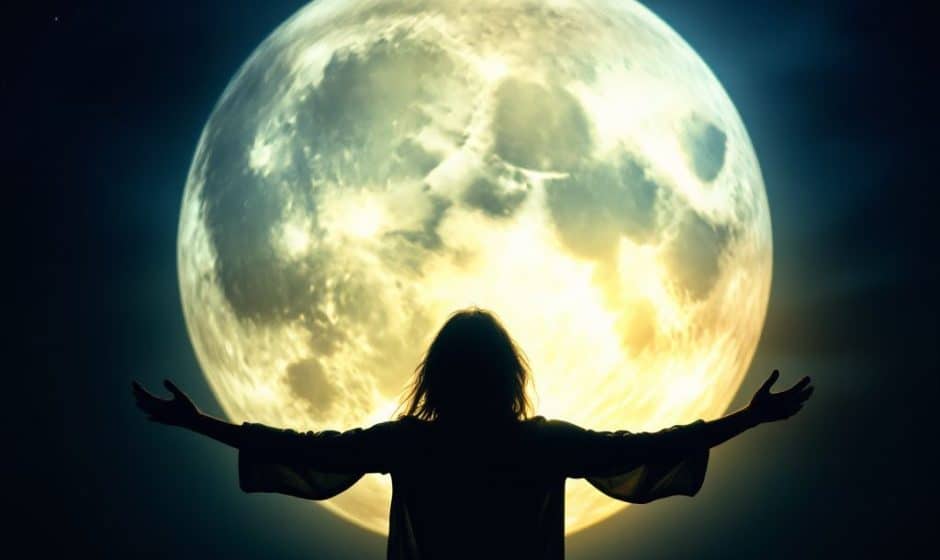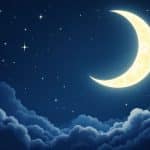Hey, you! Yeah, you! The one endlessly searching for answers about why your body sometimes feels like it’s auditioning for its own daytime soap. Ever wonder if there’s a natural rhythm you’re not quite in tune with—a gentle dance between the moon and your hormones you’ve not been quite able to master yet? You’re in the right place. Let’s talk about how you might align with the moon cycle health and what that means for your women hormones.
Let’s Set the Stage
Picture this: your body has its very own band of hormones—each with its harmonizing instrument. Ideally, they sync together to create a melodious tune. But some days, it’s like you’ve wandered into a jazz band before coffee, everything chaotic and out of tempo. It’s normal. And just maybe, the moon has some pointers to help us out.
The Moon’s Graceful Dance: More Than Just a Pretty Light
Our celestial neighbor has been guiding tides, wildlife behaviors, and folklore for centuries. The moon cycle health lore suggests that the phases of the lunar cycle—waxing, full, waning, and new—can influence how we center ourselves. It’s especially insightful for the ladies in the room trying to understand their women hormones a bit better.
Why Sync with the Moon?
It’s not just mystical musing. There’s historical wisdom and a bit of science peeking in too. As the moon waxes and wanes, some women find their hormonal fluctuations bear a striking correlation with its phases. Theories suggest that, just as the moon influences the ocean tides, maybe—just maybe—it’s nudging your hormonal tides right under your nose too.
Moon Phases and You
The moon dances through four phases, creating a cycle that can complement your own. Let’s peek into each one:

- New Moon: Fresh starts and introspection are the focus here. It’s akin to a new cycle in our own systems—whether achieving balance or setting intentions.
- Waxing Moon: Ah, the energy is on the rise! Similarly, estrogen tends to be prepping to make you feel more dynamic during your follicular phase.
- Full Moon: Energetic and vibrant—reflecting the peak of your cycle’s energy, like a social and confident ovulation phase mirroring nature.
- Waning Moon: Time to retreat, relax, and restore. Like your luteal phase, it’s a natural time to turn inward and slow down.
Syncing Your Cycle: Here’s the Idea
I bet you’re thinking, “Uh, okay, sounds pretty—but how does this help me when chocolate ice cream is my best friend and my pants are a lie?” Honest, relatable questions. Syncing your cycle doesn’t mean instant solutions, but think of it like taking dancing lessons with the moon—it’s all about learning the steps and establishing your rhythm.
Recognize Your Hormonal Dance Partners
Your hormones—estrogen, progesterone, testosterone—aren’t just single-note players. They’re a trio leading your body through different physiological feats every cycle. Here’s a bit about how each might line up with a moon phase:
- Estrogen (our waxing queen): Increasing energy, promoting confidence. Keep an eye out during the Follicular Phase and the moon’s waxing phase.
- Progesterone (calming waning guide): Gentle, nurturing, reflecting time to wind down. Notice during the Luteal Phase and waning moon.
- Testosterone (let’s call it the full moon pump): Peaks during open, social ovulation days. Shine bright just like the full moon.
Steps to Sync

Yeah, real life isn’t always sensitive to you scheduling your lunar meet ups, but incorporating moon cycle health practices doesn’t demand total life upheaval.
Keep a Moon Journal
Make it fun—grab a cute notebook and set it at your bedside. Jot down notes on how you feel emotionally, physically, and mentally during each moon phase. This is your chance to spot patterns and tune in to any correlations with your cycle. Seeing it laid out can sometimes surprise you with clarity.
Embrace Nature-Based Rituals
Not talking about howling at the moon (unless you’re into that). Simple rituals like a moonlit walk or meditation may enhance relaxation and introspection. You know your mind best; let it flow with calming practices that resonate with you.
Nourish Your Body with Intent
We’re not saying swap your entire diet for meadow-raised chia seeds—though chia puddings are kind of divine. Aligning eating habits with moon phases can mean intuitive eating-er days, heightening nutrients needed during specific phases. Legumes in waning times, fresh greens as the moon waxes—enjoy the down-to-earth menu.
Pitfalls and Real Talk
Syncing isn’t really about painting every female experience with the same celestial brush. We’re complex creatures—hormones included. Here’s the real deal:
- Avoid Pressured Precision: Don’t tie yourself to calendars and charts with unbending intensity. Our bodies aren’t 100% predictable bots.
- That’s All Fine and Well, but…: Trust your body and consult professionals if something feels amiss. Real wisdom recognizes when to ask for help.
- Be Complicated, Embrace Thorns: Your cycle can reveal a part of your life’s ebb and flow. Be forgiving—your tides are part of your unique pattern.
A Holistic Life, Gleaming with Lunar Light

At this point, you might see your monthly cycle as a more beautiful, relatable rhythm—a justified significance shared even with twinkling lunar sisters.
Create Your Own Moon Map
You’re the captain of your ship. You compare the routes charted through your knowledge, intuition, and, yes, maybe a twinkle-eyed look up now and then.
Action Plan
- Get Personal: Develop your moon and hormone map using observed experiences.
- Stay Open: Invite ongoing growth and kindness into your journey. So today wasn’t fantastic for self-care—pick one tiny gesture tomorrow.
- Share the Glow: Join others embracing natural rhythms. You might discover inspiration—or inspire others—in shared stories and community bonds.
Wrap It Up
Nature invites you—gently yet insistently—to dance along. Slip on mismatched socks if you need; communal rhythm finds strength first in acceptance, then in user-friendly experiments. You are—that moon and a budding hormone-expert at heart. So, ready to lead and listen to your own symphony?
Frequently Asked Questions
What are the primary hormones involved in the female reproductive system?
The primary hormones involved in the female reproductive system include estrogen and progesterone, which are produced by the ovaries. Additionally, the pituitary gland produces luteinizing hormone (LH) and follicle-stimulating hormone (FSH), which play crucial roles in ovulation and the menstrual cycle. Other hormones like testosterone, although typically associated with males, are also produced in smaller amounts by women and contribute to reproductive and overall health[1].
How do hormones regulate the menstrual cycle?
Hormones regulate the menstrual cycle through a complex interplay. Estrogen levels increase during the follicular phase, causing the uterine lining to thicken. After ovulation, progesterone levels rise to prepare the uterus for a potential pregnancy. If pregnancy does not occur, the levels of estrogen and progesterone drop, leading to the shedding of the uterine lining and menstruation. This cycle is driven by the balance of these hormones and the feedback mechanisms involving the pituitary gland and ovaries[1].
What is hormone therapy, and how is it used in menopause?
Hormone therapy (HT) is used to replace the female hormones, primarily estrogen and progestogens, that are lost during the menopause transition. It is prescribed to alleviate symptoms such as hot flashes, night sweats, vaginal dryness, and sleep disturbances. HT can be administered systemically through pills, patches, or gels, or locally through vaginal estrogen therapy. The therapy helps in maintaining bone health, reducing the risk of cardiovascular disease, and alleviating other menopausal symptoms[3][5].
What are the potential risks and benefits of hormone therapy for women?
The benefits of hormone therapy include relief from menopausal symptoms like hot flashes and vaginal dryness, protection of bone health, and a reduced risk of cardiovascular disease and type 2 diabetes. However, there are also risks associated with HT, such as an increased risk of blood clots and breast cancer, particularly if therapy includes both estrogen and progestogen and is continued for more than five years. The decision to use HT should be based on individual health history and symptom severity[3][5].
References



